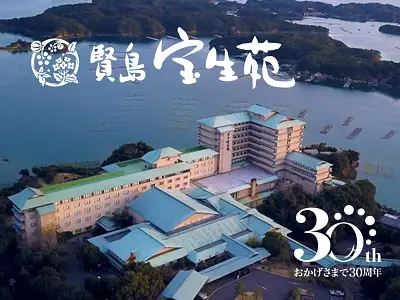「かざはやの里 梅まつり」で梅香る春を満喫。2025年2月14日(金)開園のかざはやの里を詳しく紹介します!
掲載日:2025.01.20
三重県津市にある、かっぱのふるさと『かざはやの里』は、障がいのある方と施設職員が力を合わせて園芸福祉に取り組んでいる全国でも初めての『福祉と環境を融合した花園』。初春は「梅」、春は「藤」、夏は「紫陽花」を楽しむことが出来ます。今回は、春の訪れをいち早く教えてくれる『かざはやの里 梅まつり』について紹介します。
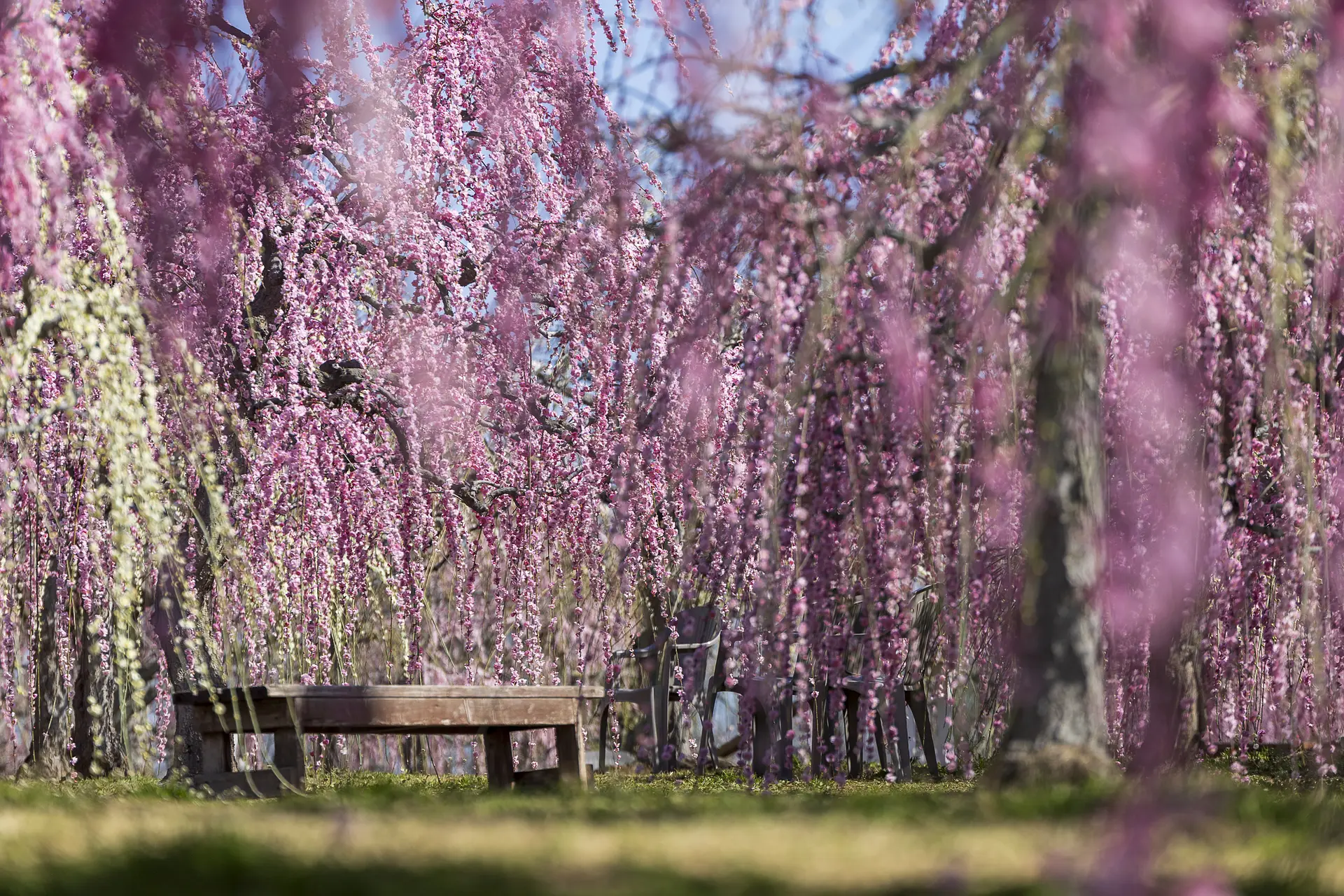
三重県津市にある、かっぱのふるさと『かざはやの里』は、久居ICから車で約10分弱。周囲3.8kmに及ぶ風早池のほとり、約7万平米の丘陵地「伊勢温泉ゴルフクラブ」内にあります。
運営しているのは、社会福祉法人「正寿会」。
日本で初めて『園芸福祉』を取り入れた花園として、福祉と環境の融合に取組んでおり、障がいのある方と施設職員が力を合わせて、梅が約500本、あじさい約77,700株、そして10品種の藤を管理しています。
※掲載されている写真は、2020年2月以降に撮影されたものです。
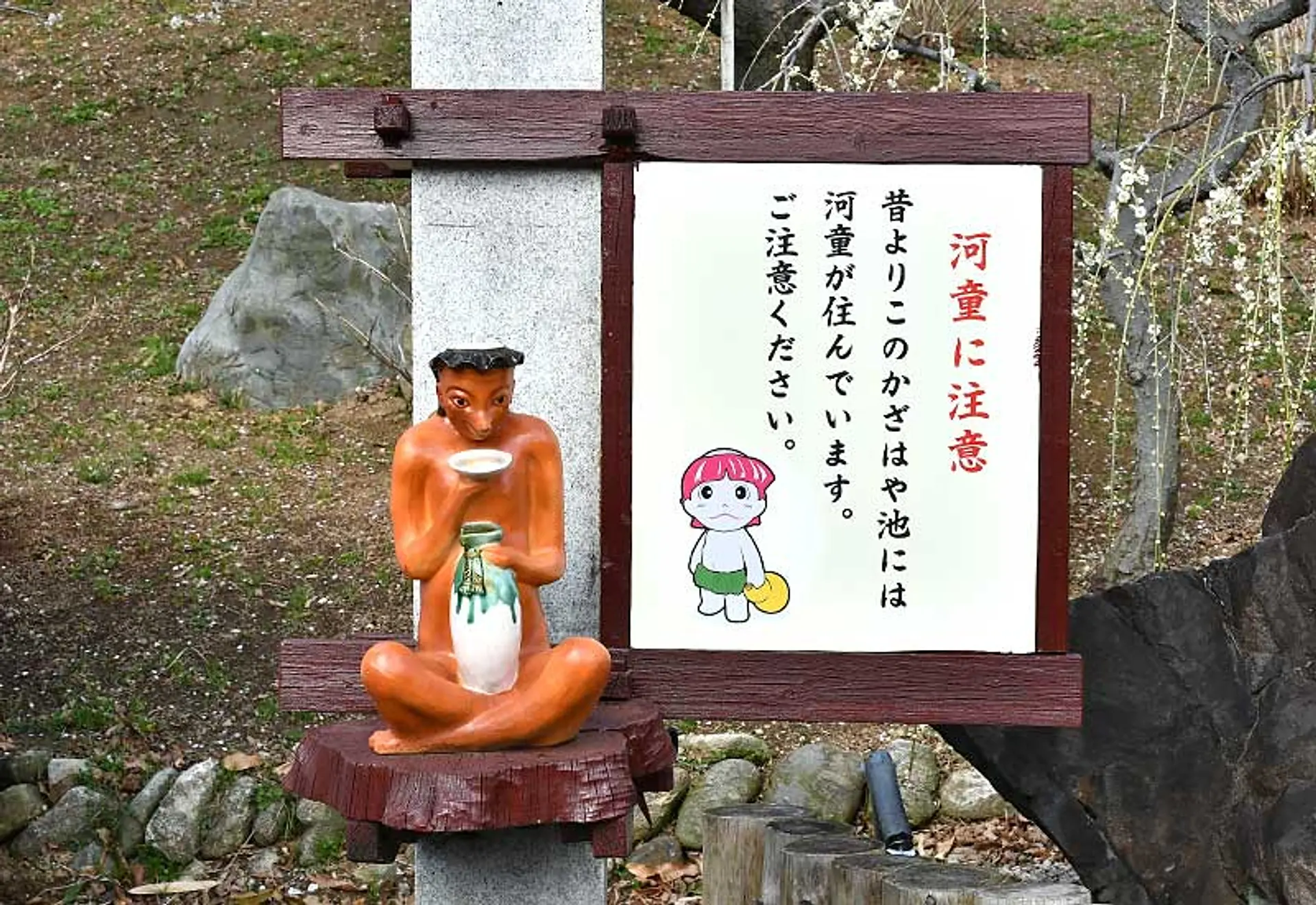
施設名の「かざはやの里」は、敷地内にある「風早(かざはや)池」が由来。
ちなみにこの「風早池」は、垂仁天皇が紀元35年、全国に作った800の灌漑池のひとつです。
戦国時代には津城藩主「藤堂高虎」が灌漑工事を手掛けた土地に「風早」とつけたことから「風早池」と名付けられ、現在も県内有数の田畑の水資源となっているとのこと。
河童(カッパ)のふるさとといわれている所以は、この「風早池」に、近くの雲出川に住んでいた河童(カッパ)が移り住んだからと言われているそうですよ。
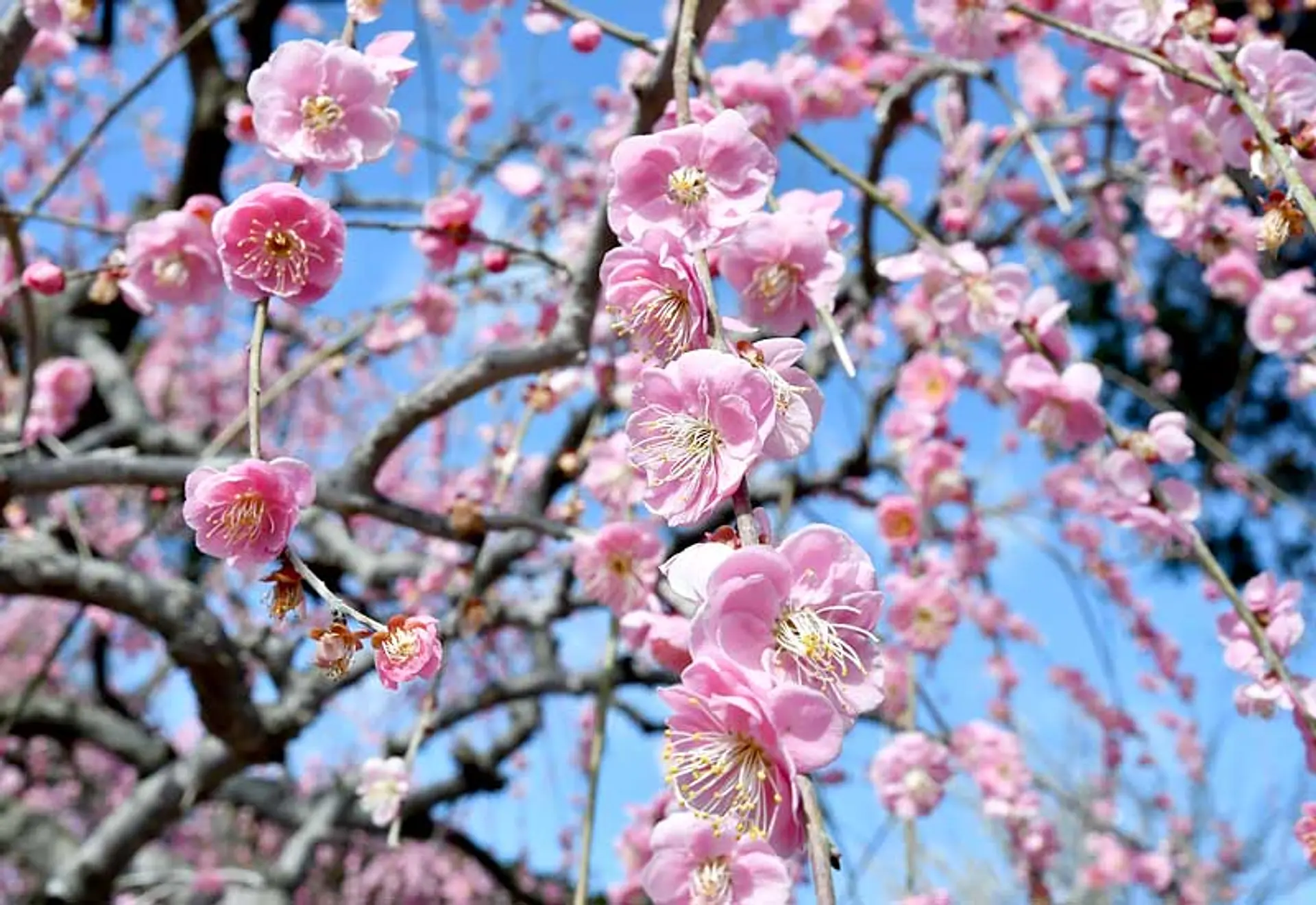
梅は、「百花魁(ひゃっかさきがけ)」という呼び方もあって、1年のなかで最も早く咲く花として知られています。
雪景色や寒空のなか美しい花をつける梅は、生命力の強さを感じることから縁起の良い花とされ、正月の飾りとしても重宝されてきました。9世紀半ばの平安時代中期までは、「花」と言えば桜ではなく梅のことを指しているほど、「梅」は花の中の主役だったのです。
かざはやの里の梅はカメラマンにも大人気で、InstagramやTwitterでもたくさん投稿されています。
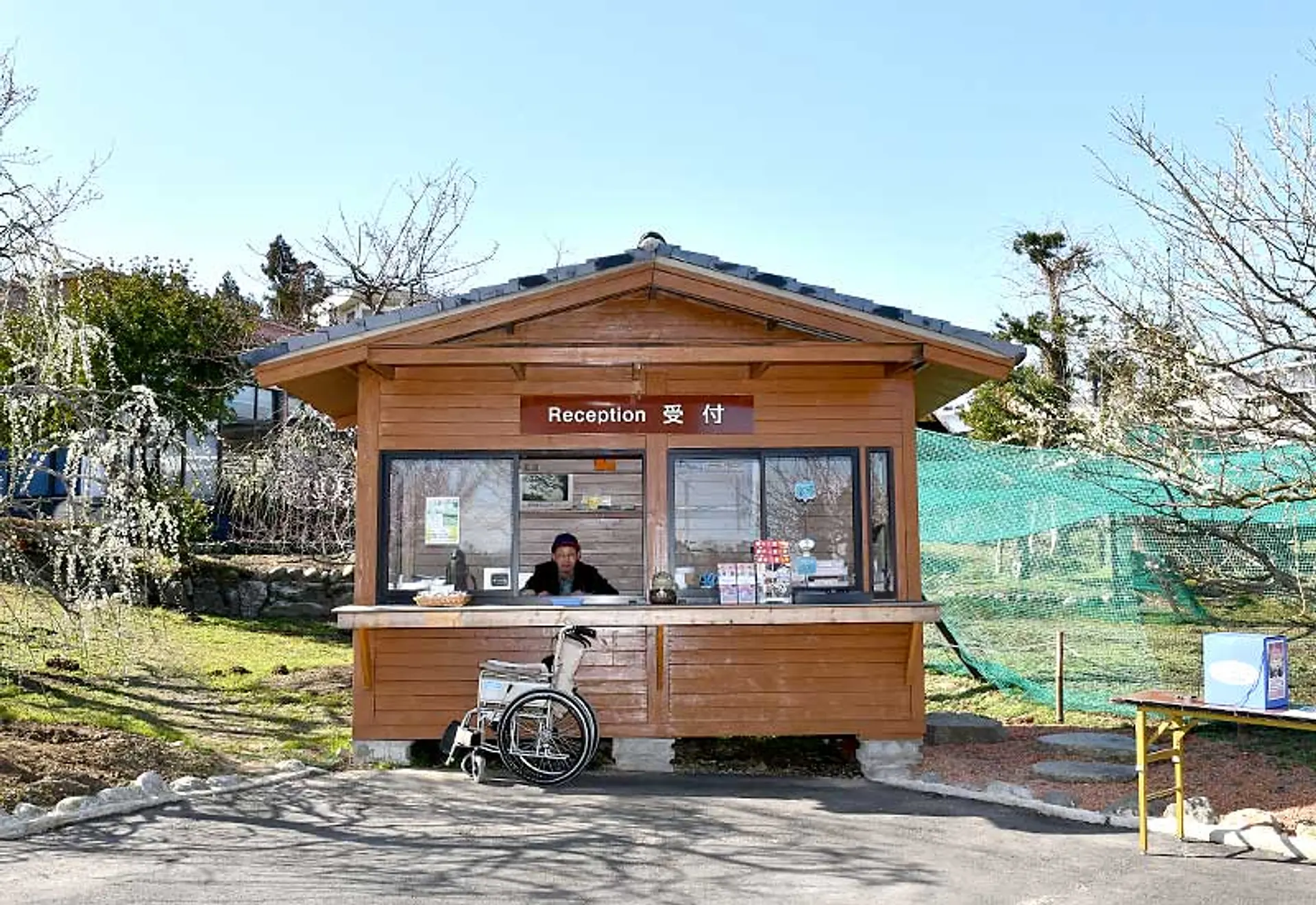
普通自動車だけでなく大型観光バスも無料で利用できる駐車場に車を停め、【花園入口】の看板横の道を下りていくと、風に乗って梅の香りが漂ってきます。
こちらの受付で入園料を払い、メイン広場へ向かいます。
2025年の入園料は、花の美頃(梅が美しく観賞できる時期)により変動します。大学生以上は500円~、中高生以上は300円~、小学生以下・障がい手帳持参の方は無料となります。
※入園料については、オフィシャルサイト又はお電話にてご確認ください。
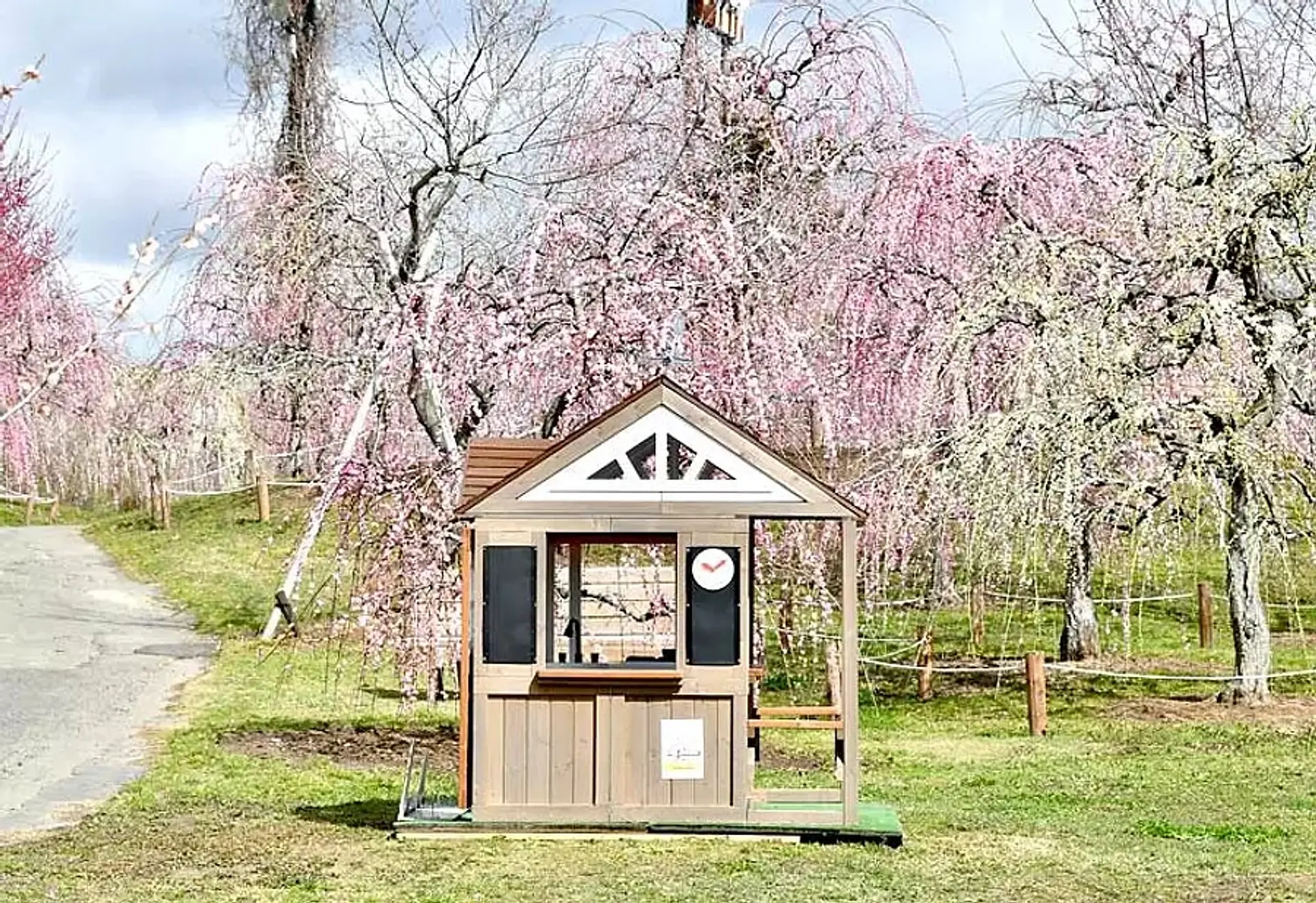
かざはやの里は、ワンちゃんも一緒に入場することができます。リードを着用すれば花園内全域を散策できます。
ワンちゃん用のフォトスタンドやドックハウスも設置されており、梅の中で可愛いワンちゃんの撮影が出来ます♪天然芝の広いドッグランもあるので、リード無しで自由に走らせることもできます。季節を感じながら愛犬とのお散歩を楽しめる愛犬家にもうれしいスポットでもあります。
また、園内にはお子様アスレチックや顔出しパネルがあり、お子様も楽しめる工夫がいっぱい!
期間中は、お子様スタンプラリーも開催され、ファミリーで楽しめます。
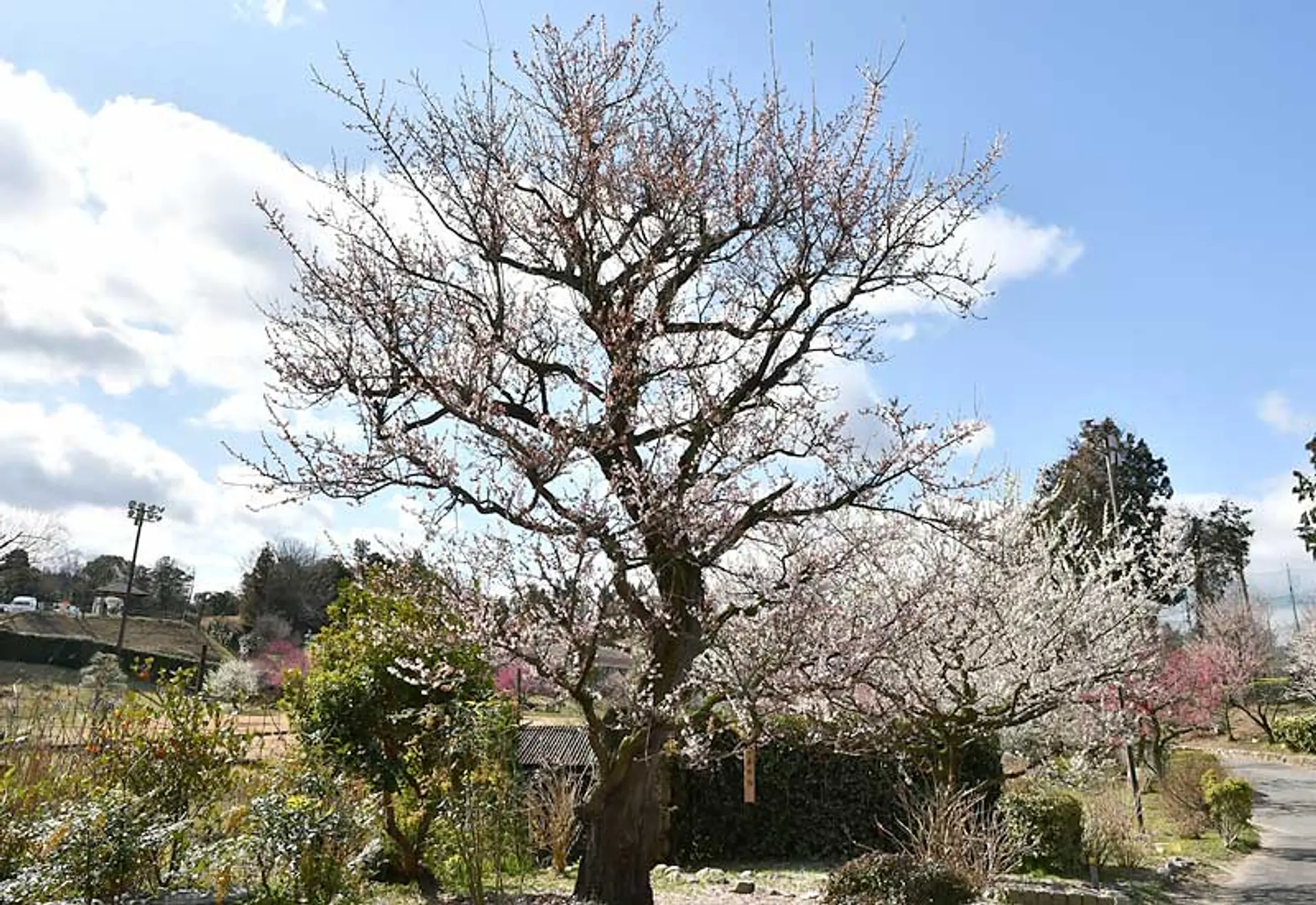
メイン広場で向かう中、ひときわ目を引いたのが、こちら養老梅。
樹齢100年を超える『かざはやの里』のシンボルともいえる木です。
年月を重ねた風格と風情を兼ね備えた幹と枝付き、しばらく足を止めてじっと見入ってしまいます。
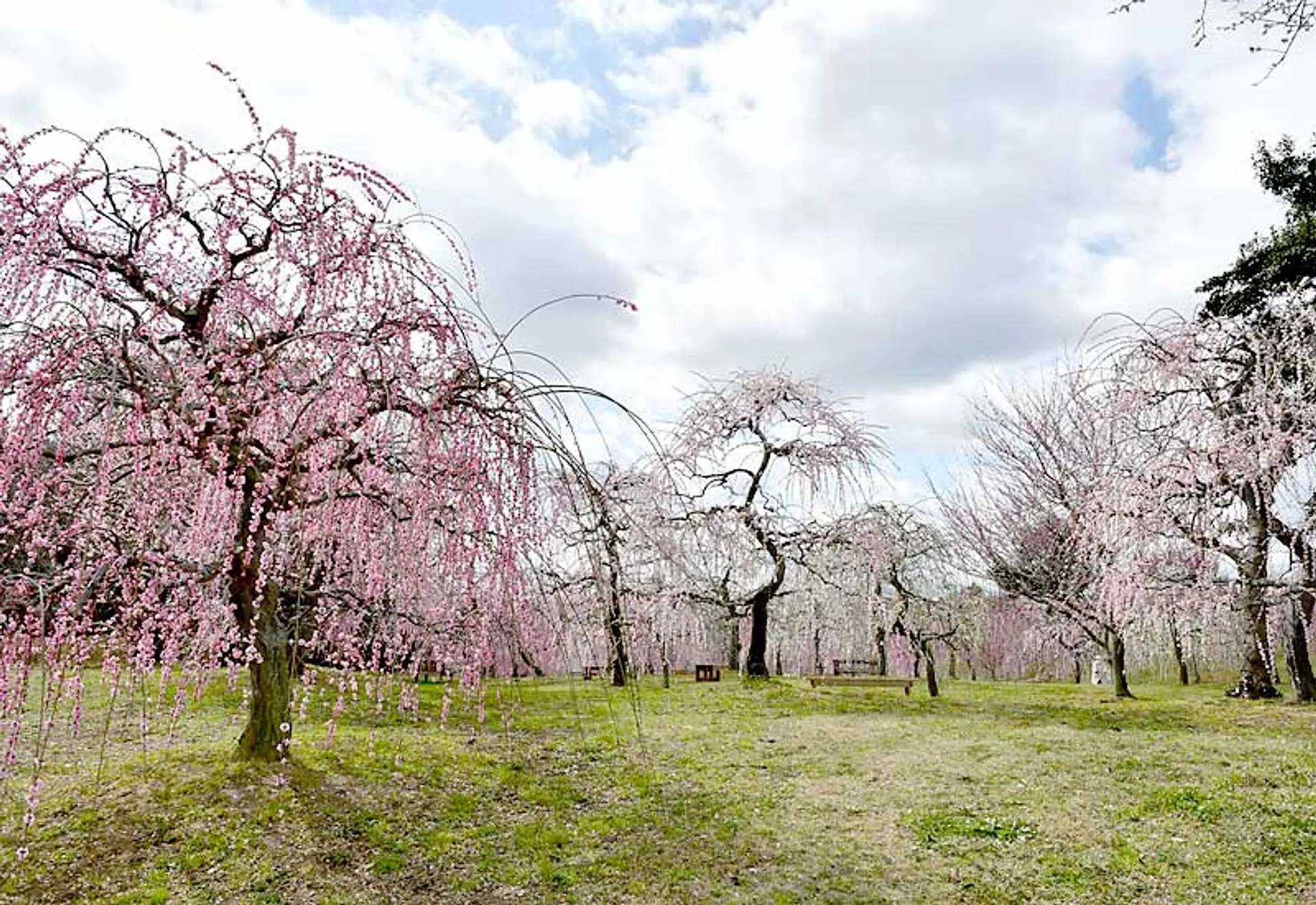
こちらがメイン広場の紅白のしだれ梅。
しだれ梅は繋ぎ木のため、植樹の際に紅白バランスよくなるように基樹を計算しながら植樹されたそうです。
紅白のしだれ梅に青空。インスタ映え間違いなしのポイントです。
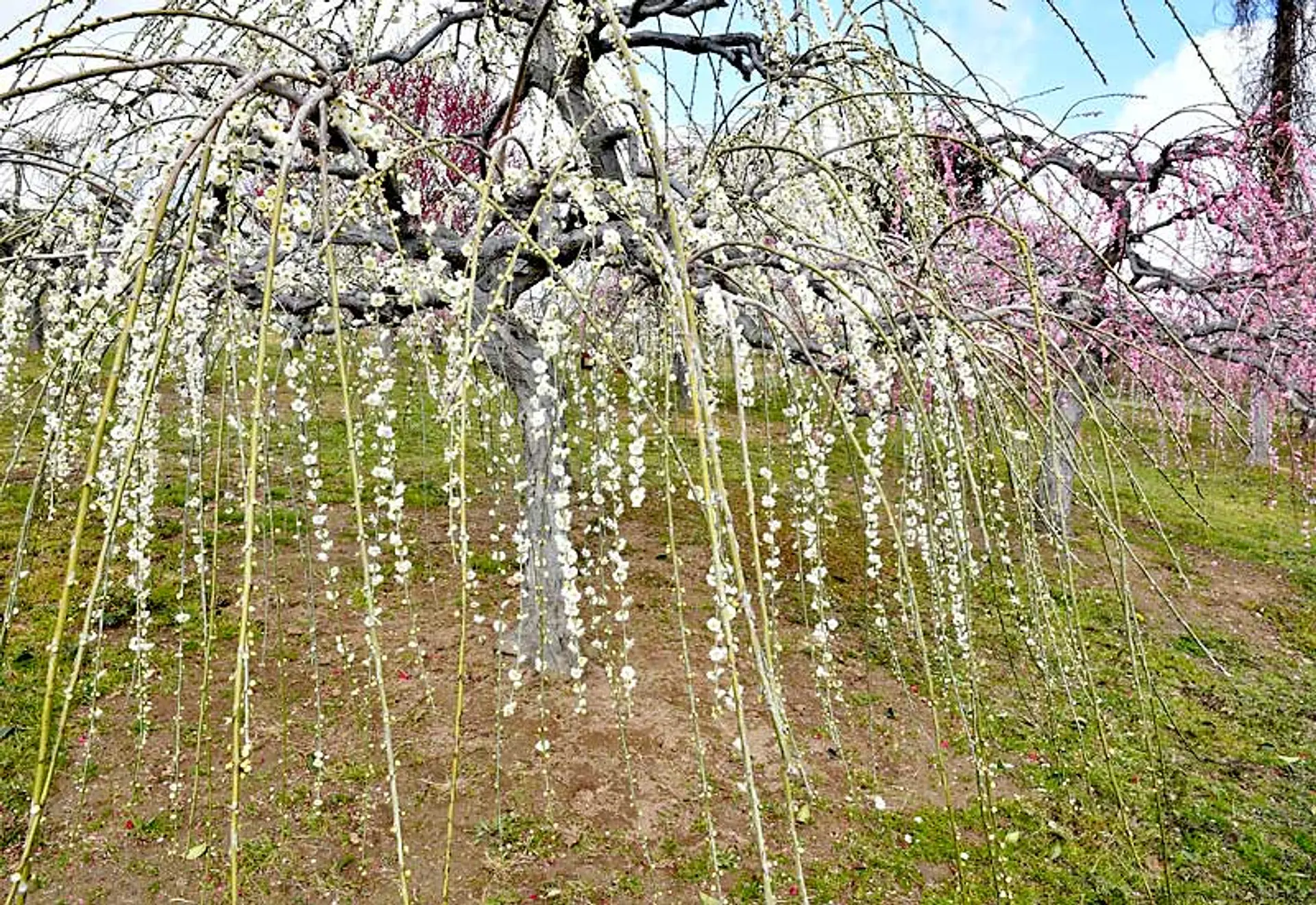
青空の下、緑の芝生の絨毯に紅白のしだれ梅に囲まれ、優しい梅の香りに包まれていると時が経つのを忘れてしまいそうなくらい、穏やかでのんびりとした気持ちになります。
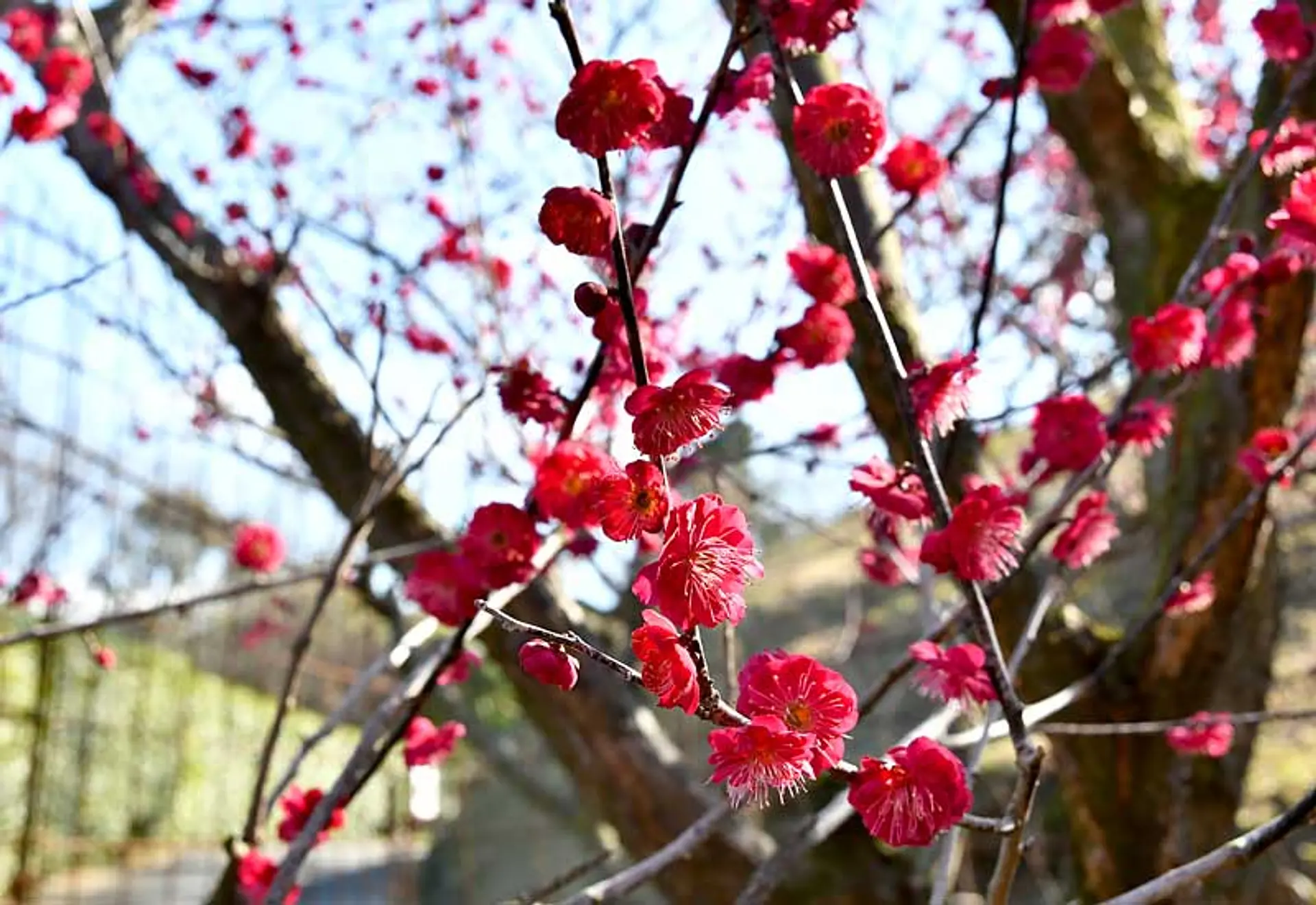
ここからは、園内で見つけた梅をご紹介いたします。
こちらは、ひときわ鮮やかな紅色の梅。
紅梅の代表格で、中輪花で八重咲きのきれいな紅色の花梅、『鹿児島紅梅』(かごしまこうばい)です。
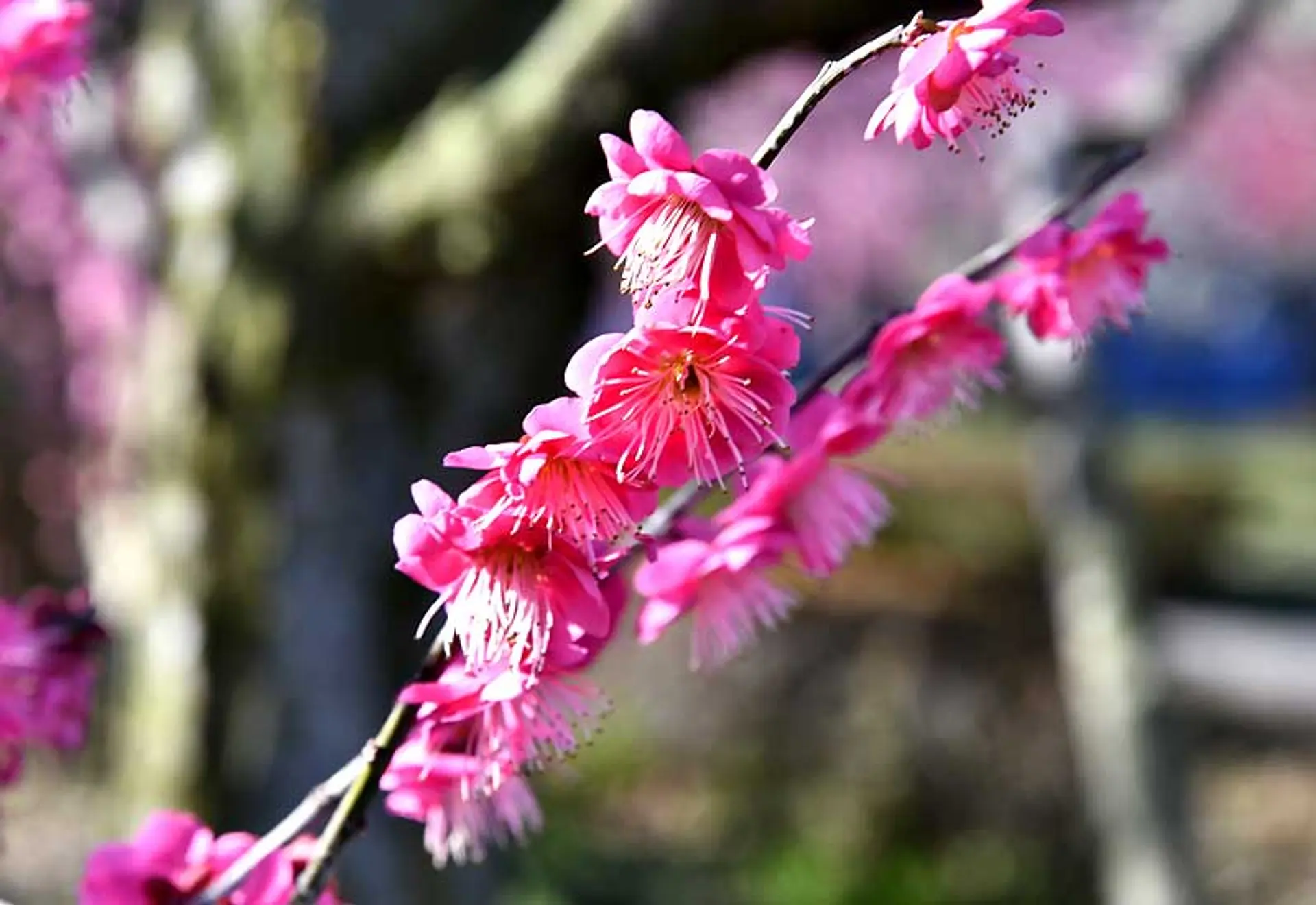
鹿児島紅梅の隣にあったのが、古くから一般的に広がっている『八重唐梅』(やえとうばい)。
花は下向きに咲くため、下から見上げると、陽に透けて花びらがより美しく見えます。
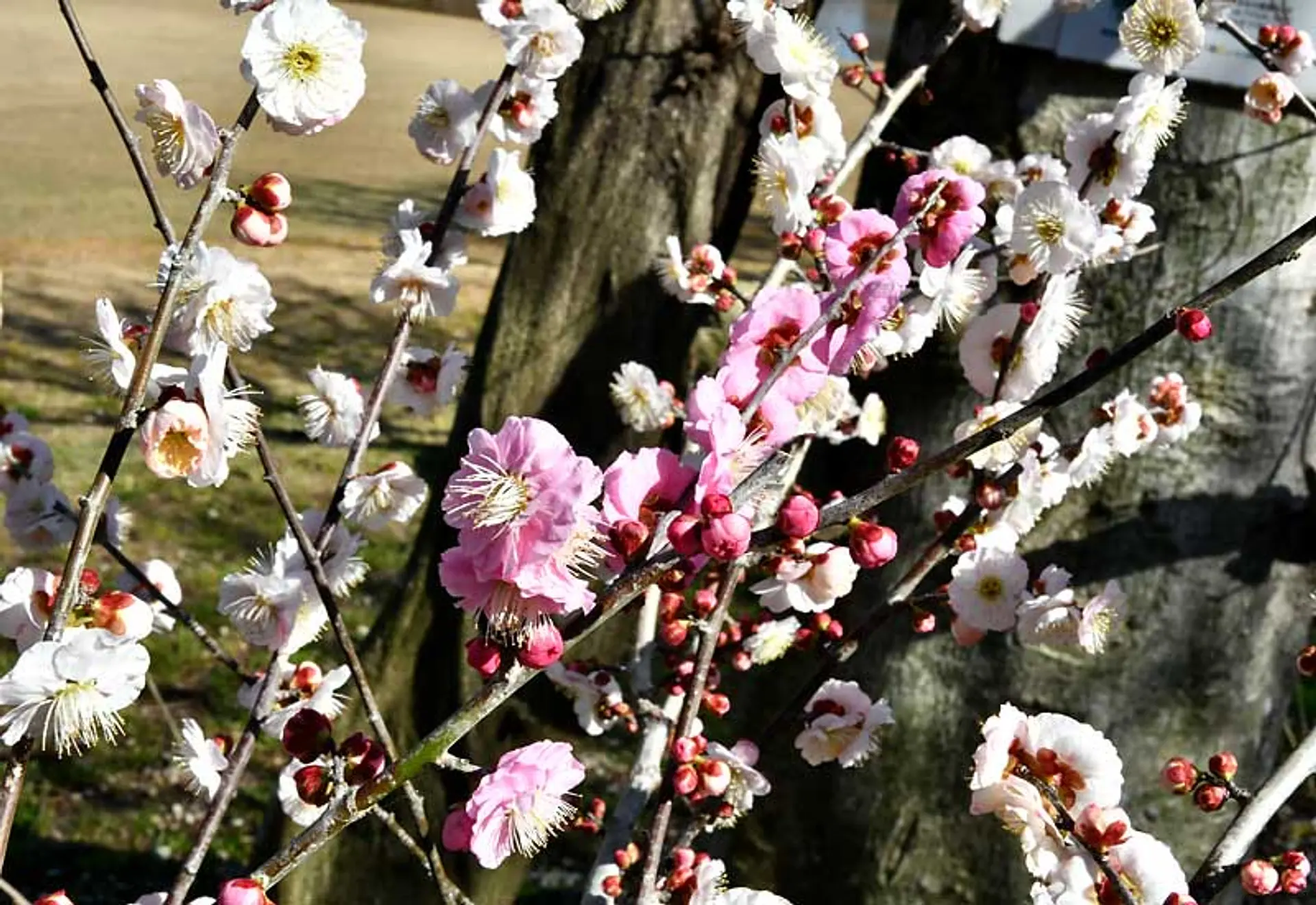
こちらは『思いのまま』。一つの木から白とピンクの花が咲きます。
枝ごとに違う色を付けるものもあれば、一つの枝で白とピンクが混ざって咲くものもあり、木によっては白だけ・ピンクだけというのもあるそう。
また、毎年同じ枝に同じ色の花が咲くというわけでもないそうで、まさに思いのままに花をつけるめずらしい梅です。
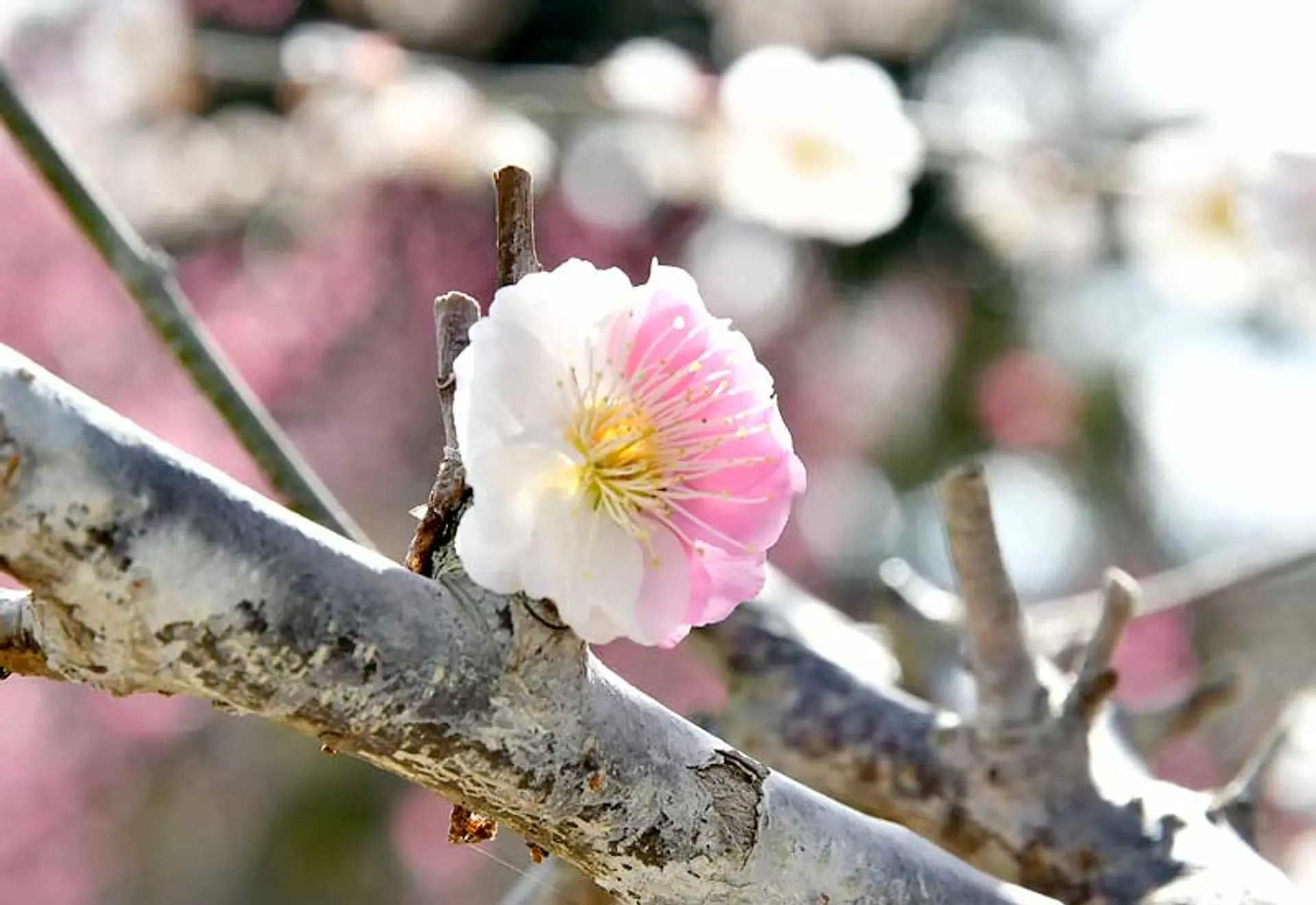
そんな木や枝によって異なる色の花を咲かせる『思いのまま』ですが、さらに珍しいのがこちら。
一つの花が白とピンクのハーフ&ハーフになっています。
園内に『思いのまま』だけでも数十本あるので、ハーフ&ハーフを探しながら散策するのも楽しいかもしれません。
このハーフ&ハーフ、ある年もあれば、無い年もあるそうなので、去年はここにあったのに…と『毎年記録をつけていく』という楽しみ方もできそうですね。
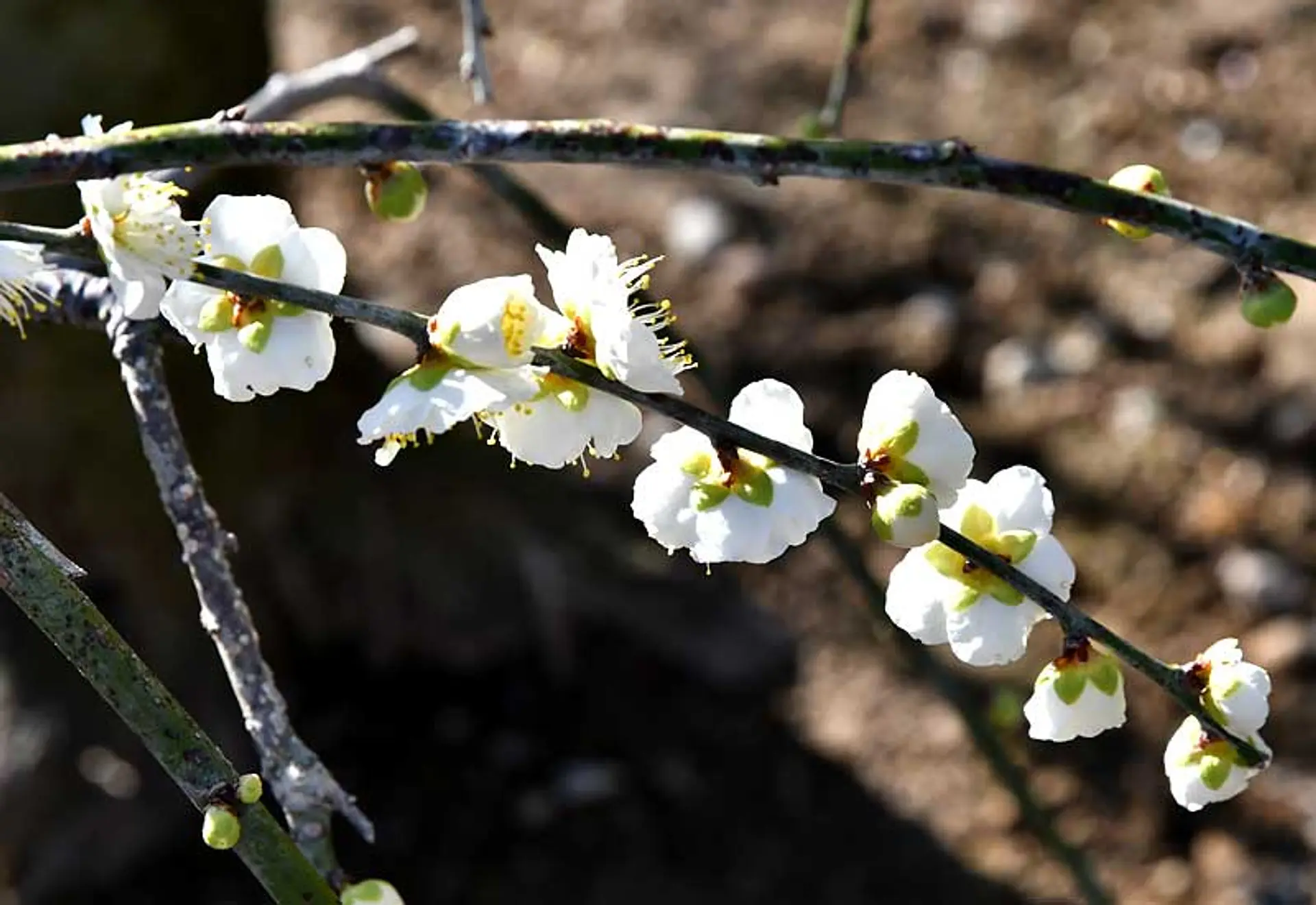
こちらは『青軸枝垂』(あおじくしだれ)。
緑白色の八重梅です。青軸性とは、枝が太めで枝やガクが緑色、蕾も緑白色のもののため、花色は白なのですが、全体として緑白色に見えます。
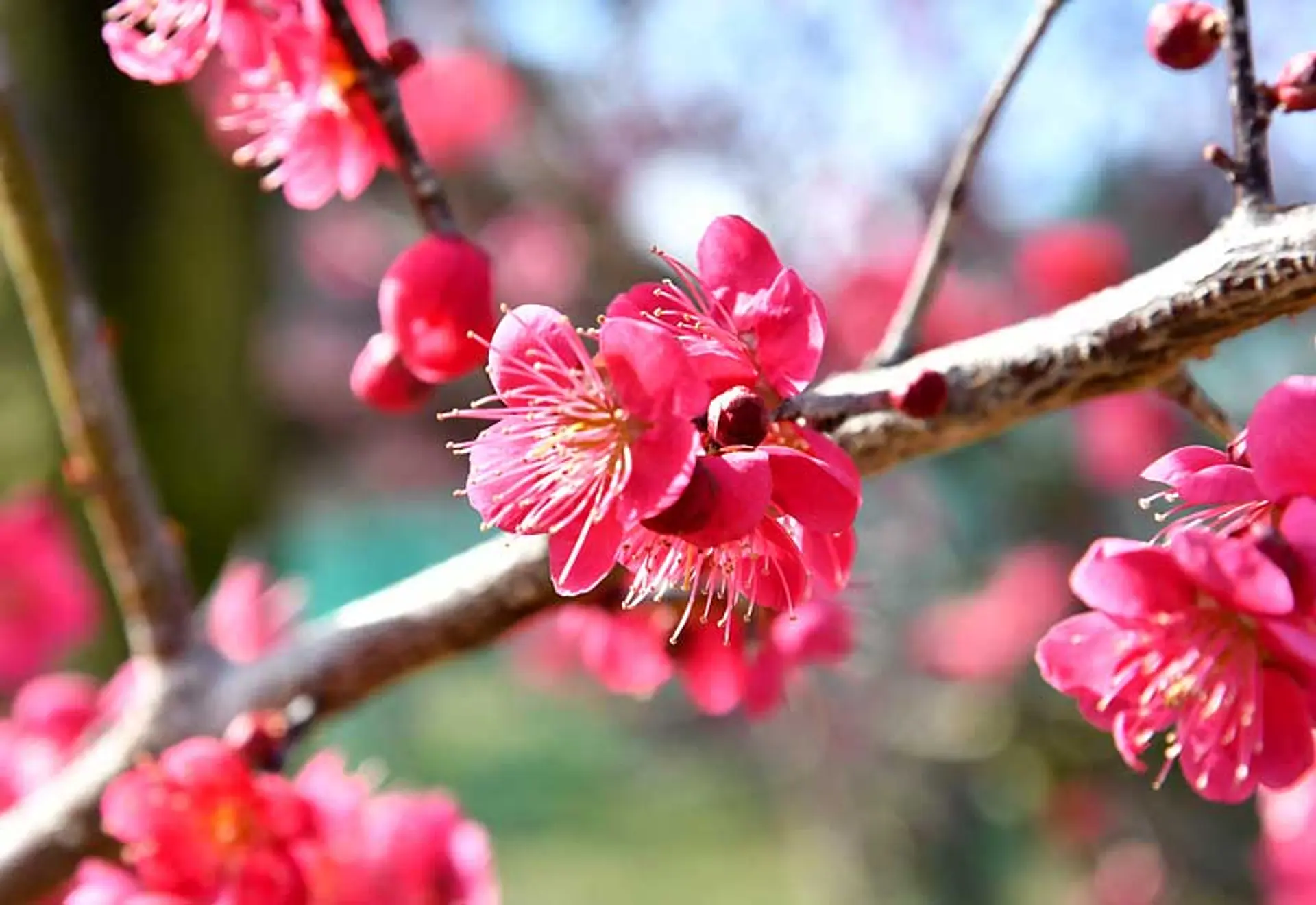
こちらは『紅千鳥』(べにちどり)。
明るく美しい紅色の丸弁一重咲きの花梅です。花付きがよく美しい紅色のため、1本でもパッと目を引く美しさです。
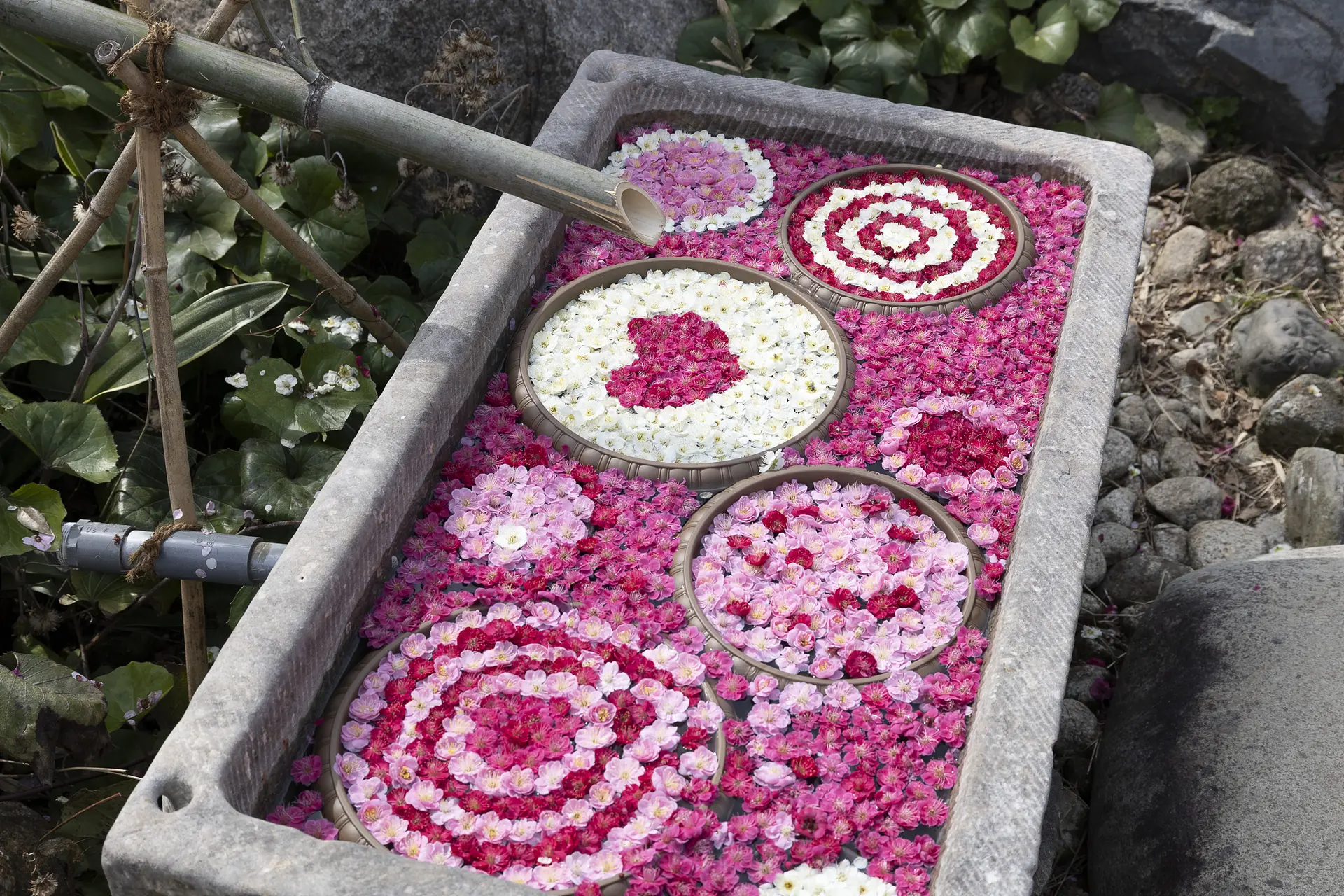
かざはやの里の園内には、花で埋め尽くされた「花手水(はなちょうず)」が季節ごとにお目見えします。
梅の時期には、白、紅、濃淡ピンクの梅の花でデザインされた可愛い花手水が。こちらも写真映え間違いなしの人気撮影スポットになっています。
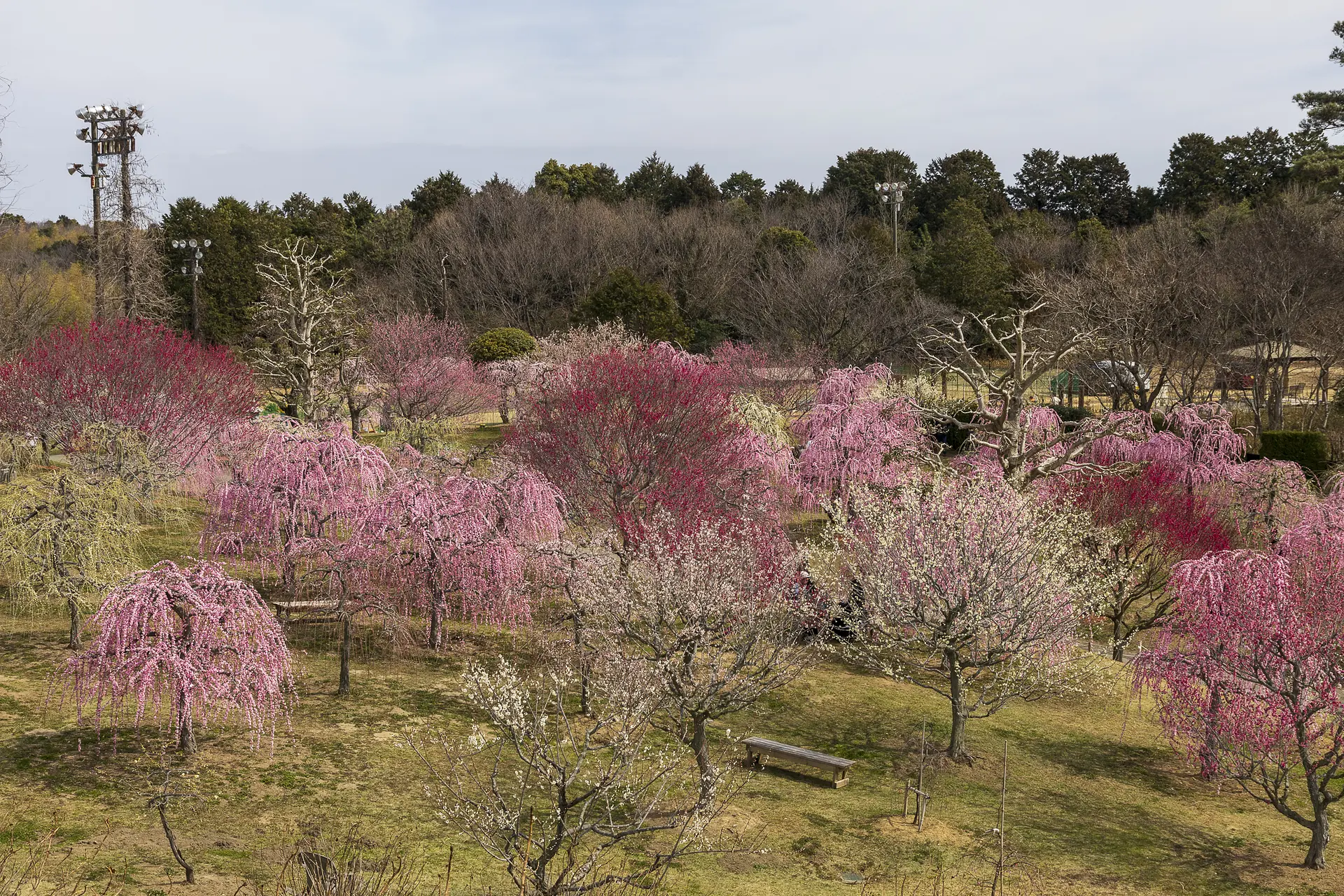
園内には「梅の絶景撮影ポイント」がいくつもあります。
少し高い所から見下ろすように観賞できる場所のありますので、園内をゆっくり散歩しながら、お気に入りの景色を見つけるのも楽しいですよ♪
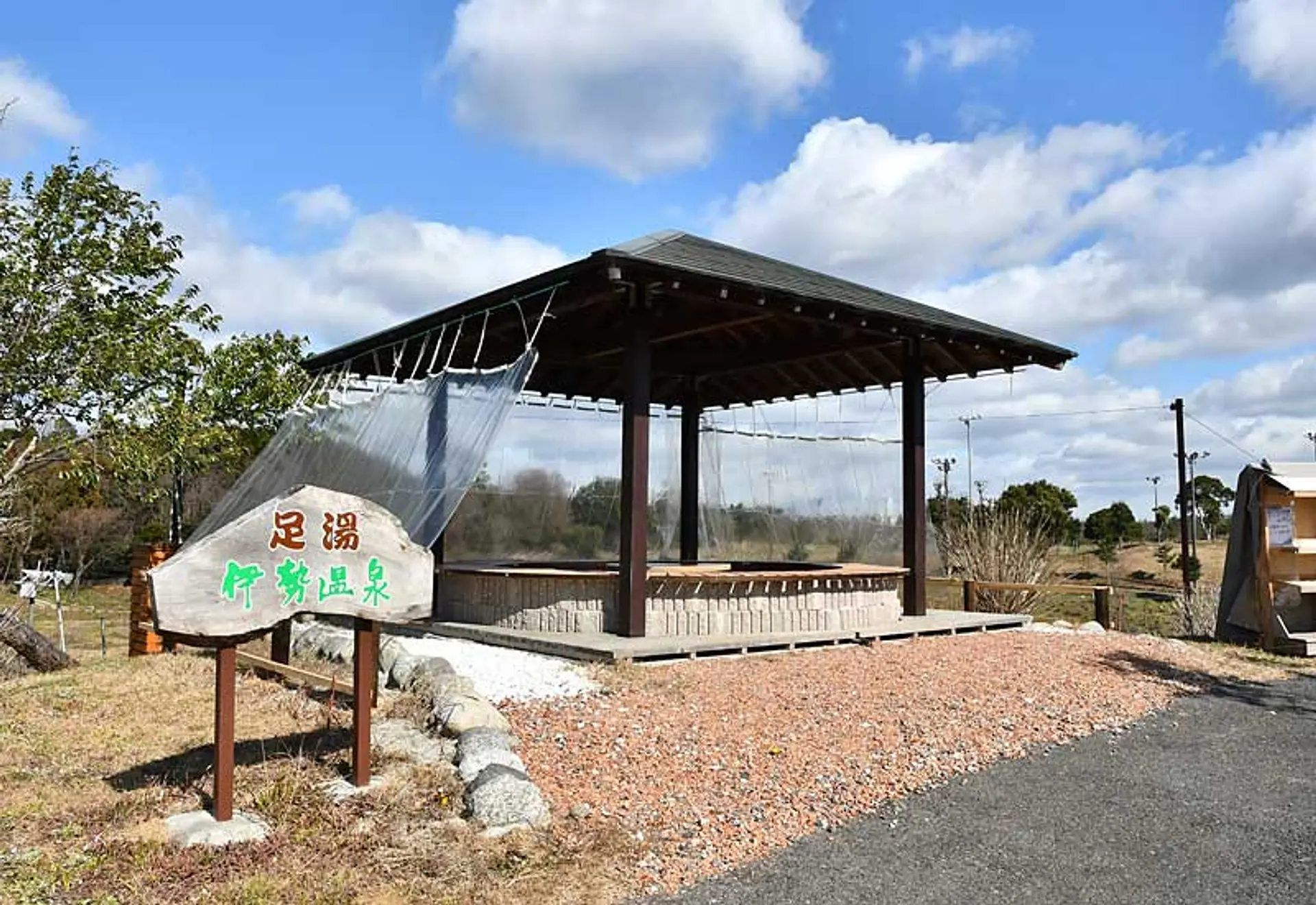
園内では、足湯を楽しむことができます。
梅の絶景を楽しみながら、一休みにするのにご利用いただけます。肌寒い日に、足元からポカポカと温まりながら、春の景色を楽しむのもいいものですよ。
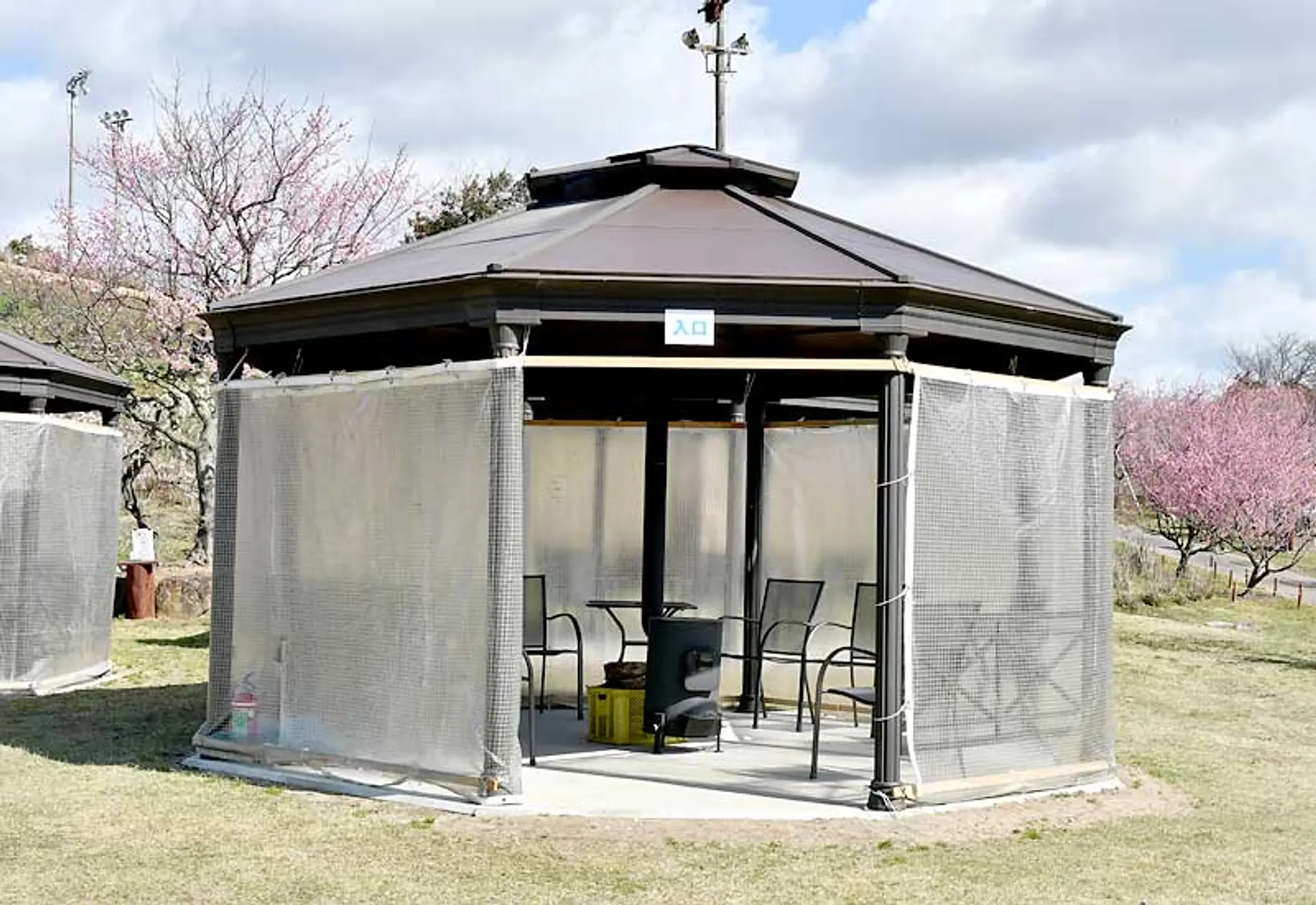
こちらは中央にある東屋。中では炭火の暖炉があり、寒い日でもほっと一息つくことができます。
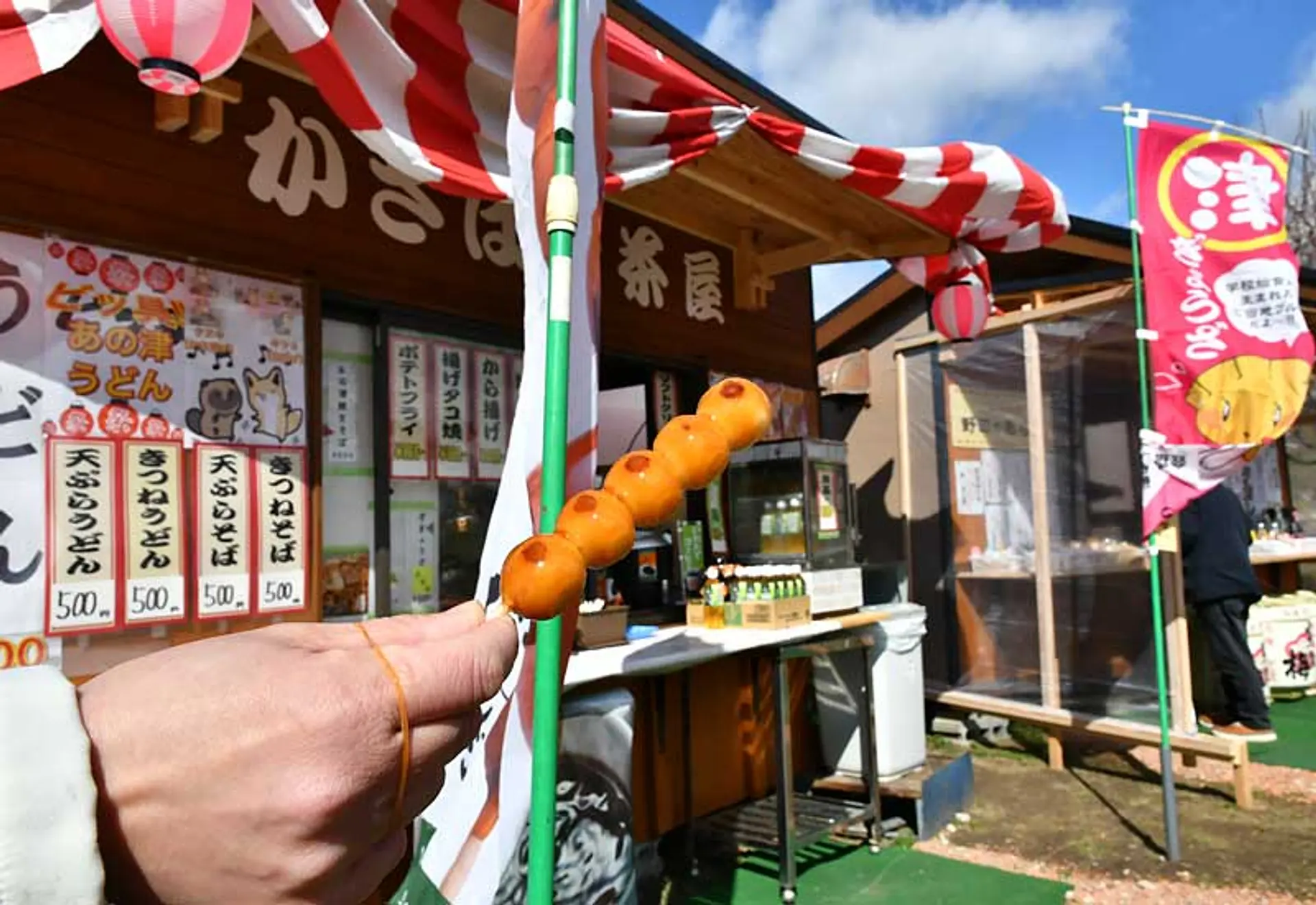
園内にある「かざはや茶屋」では、津のご当地グルメ『津ぎょうざ』・『あの津焼きそば』や、花見といえば欠かせない『みたらし団子』などが楽しめますよ。
梅まつりの期間中、キッチンカーの出店(土日祝限定)や、撮影会なども開催予定されており、梅の観賞だけでなくグルメも楽しむことができます。
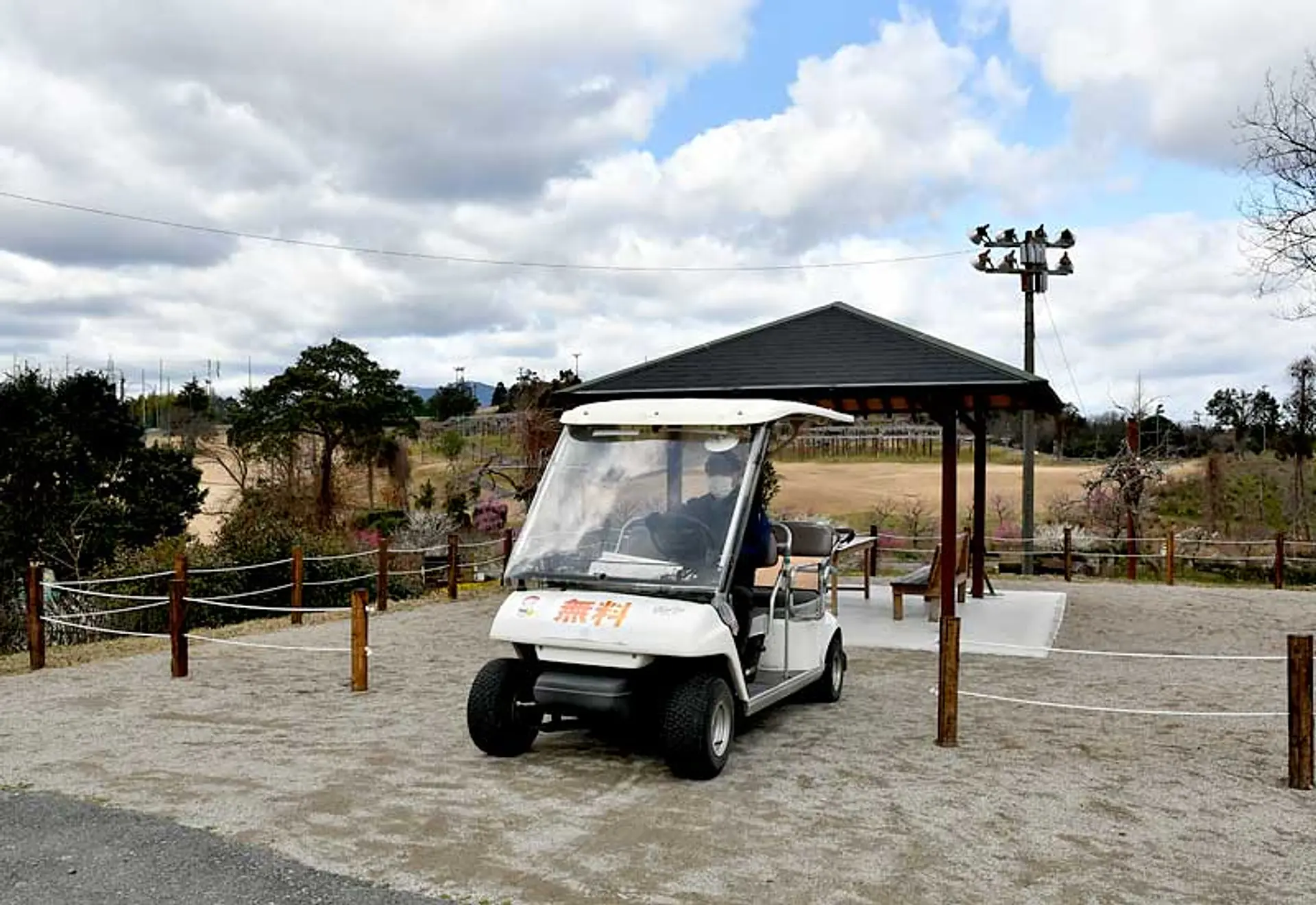
歩くのが少し辛いと言う方は、入ロゲートからかざはや茶屋までゴルフカート送迎を行っています。8:30~16:30の時間内でご利用いただけます。
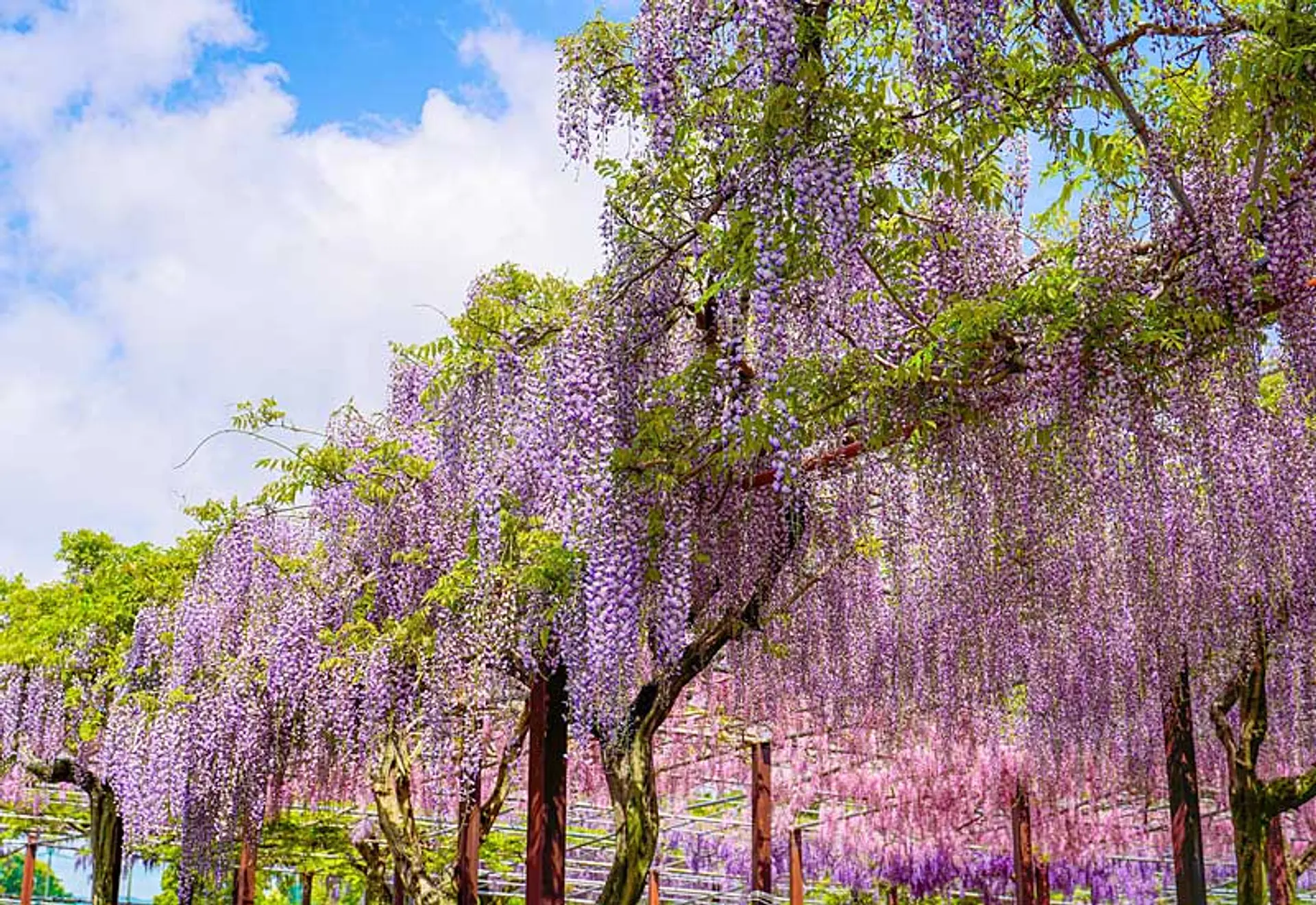
かざはやの里では、例年4月頃から「藤まつり」を開催。
こちらは園内にある、とても大きな藤棚。(※写真は見頃の時期に撮影したものです)
10,000平米の敷地には10種類のデザインの藤棚と、58,000㎡の園内の立木に10品種の藤が見事に咲き誇り、見頃の4月から5月には写真のように満開となり圧巻の絶景を見せてくれます。
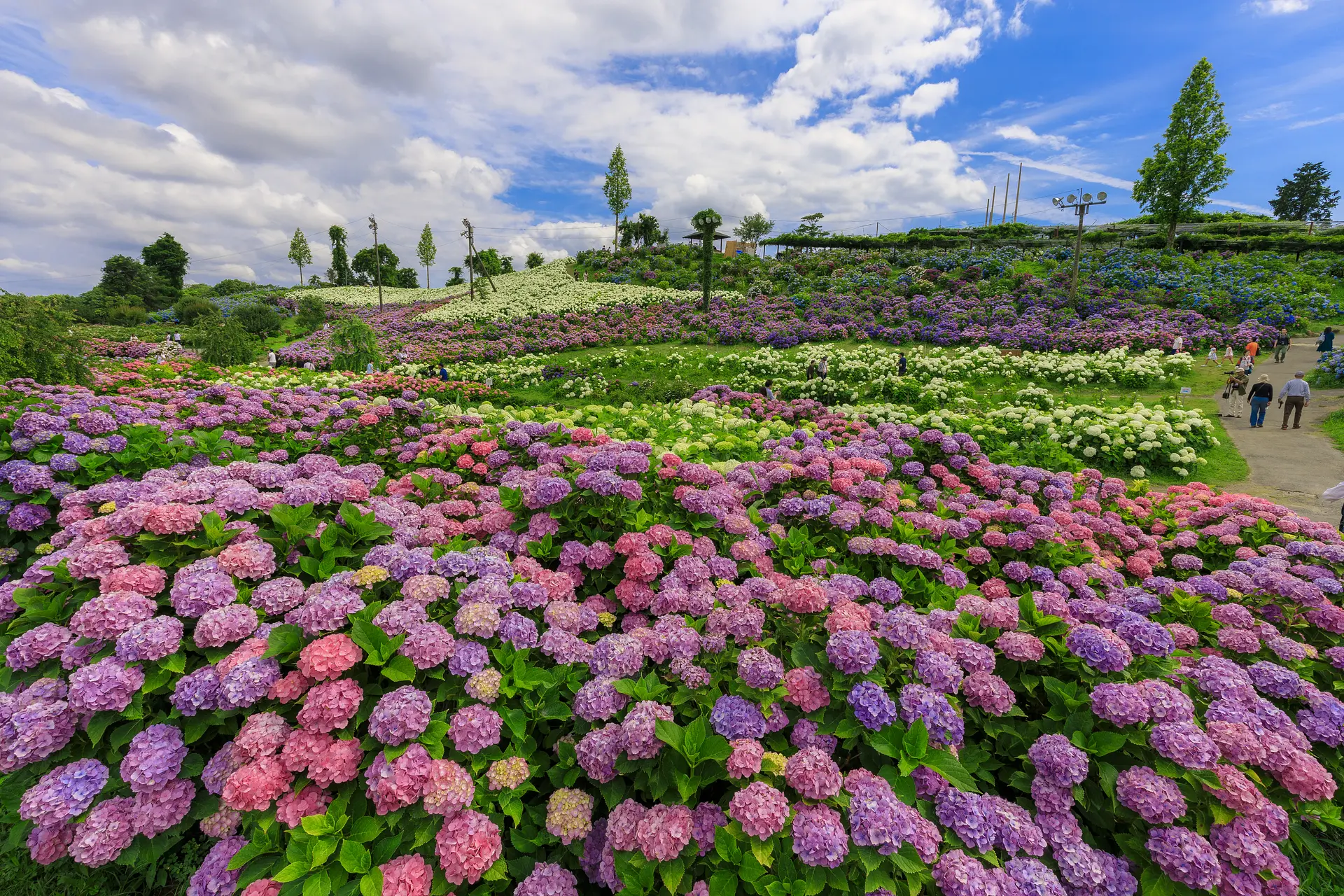
5月下旬から7月初旬にかけては、「あじさいまつり」が開催されます。
あじさいも、負けず劣らずの絶景です!(※写真は見頃の時期に撮影したものです)
77,000株もの紫陽花が咲き乱れる様子、ぜひシーズンになれば眺めていただきたいと思います。
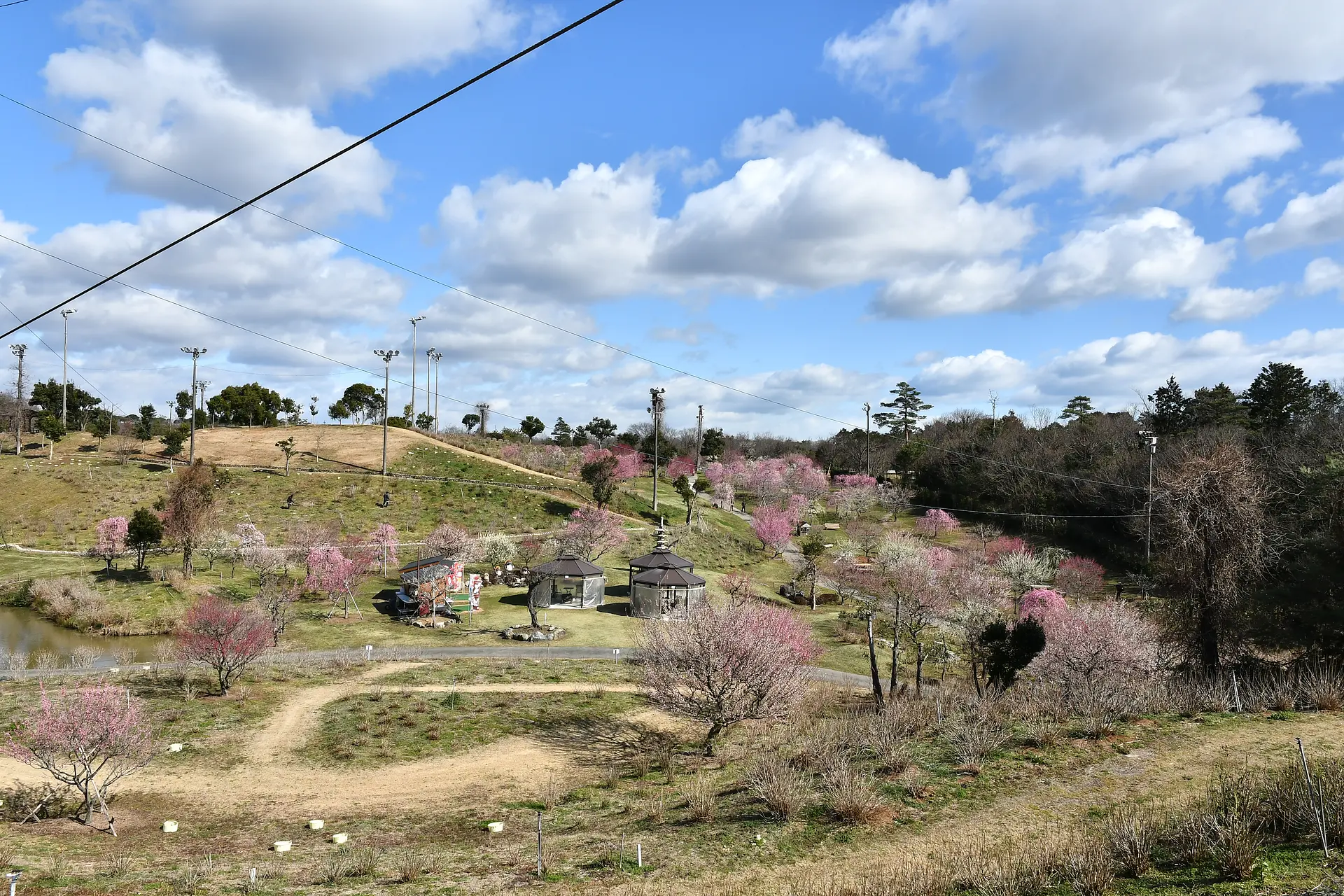
清少納言が「枕草子」で “木の花は濃きも薄きも紅梅”があるように、昔は花といえば香りと花を楽しむことができる梅でした。
芝生の絨毯に500本もの梅。ゴルフ場内であることを忘れ、日本庭園を思わせる造りの中で梅の香りに包まれながら、紅白のかわいい梅の花を見ていると、昔の貴族の気持ちがわかる気がします。
『かざはやの里』の入園料や梅の売上は障がいのある方・福祉施設利用者の給金となるそうなので、楽しみながら福祉に貢献できる場所となっています。
また、「伊勢神宮参拝」には国道23号で70分と伊勢志摩観光の行き帰りの立ち寄りに最適の場所にありますので、三重にお越しの際はぜひ足を延ばしてみてはいかがでしょうか。
梅まつりは毎年2月中旬から3月上旬で行われています。その年の天候により開園期間が異なりますので、公式サイト又はお電話(059-255-5755)でお尋ねください。
※掲載している情報は2025年1月20日時点の情報です。最新の情報はお出かけの前に施設にお問い合わせください。
福祉と環境を融合した花園「かざはやの里」~かっぱのふるさと~
花の美頃により変動します。
大人(18歳以上)100円~1500円(最高美)~100円
中人(13歳~17歳)0円~ 800円(最高美)~0円
小人(12歳以下)・障がい手帳持参者(付添健常者有料)・ペット(ドッグラン利用有料)0円
梅まつり 2月上旬~3月下旬 8:00~17:00入園締切
藤まつり 4月下旬~5月上旬 8:00~18:00入園締切
紫陽花まつり第1幕 6/1~6/30 8:00~18:00入園締切
紫陽花まつり第2幕 7/1~7/13 8:00~18:00入園締切
秋桜まつり 10月上旬~11月上旬 8:00~17:00入園締切
年中無休
第1駐車場300台・第2駐車場100台・ゴルフ場駐車場100台
・大型観光バス11台
◆近鉄名古屋線久居駅(特急停車)
☆藤・紫陽花まつり無料送迎バス有(運行日はHPに記載します。) 運行時間9:25~16:5
○西口より三重交通バス榊原車庫前行→戸木神社前下車→徒歩15分
○三重交通バス時刻往路6:30 7:16 46 8:26 9:16 10:16 11:16 12:16 13:16 14:16 15:16 16:16 17:6 36 18:6
○三重交通バス時刻復路8:21 51 9:31 56 10:51 11:46 12:50 13:26 51 14:52 16:5 53 17:30 18:1 42 19:25
◇タクシー近鉄久居駅西口→かざはやの里¥2200-
◆伊勢自動車道
久居IC右折→国道165号→百五銀行・JA三重中央右折→風早団地→駐車場
◇鈴鹿方面からは
中勢バイパス→ファミリーマート津市野田店→側道→高架下右折→県道658号線→社会福祉法人正寿会看板右折→風早池沿い→駐車場
◇伊賀方面からは
国道165号→百五銀行・JA三重中央左折→風早団地→久居交通→駐車場看板右折
◇伊勢方面からは
中勢バイパス→高茶屋小森町交差点左折→国道165号→百五銀行・JA三重中央右折→風早団地→久居交通→駐車場看板右折
※ナビ☎059-255-3433伊勢温泉ゴルフクラブ

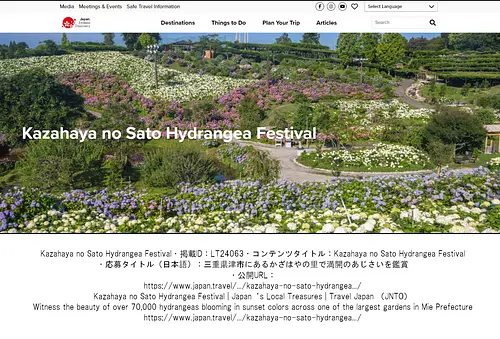
.png)
